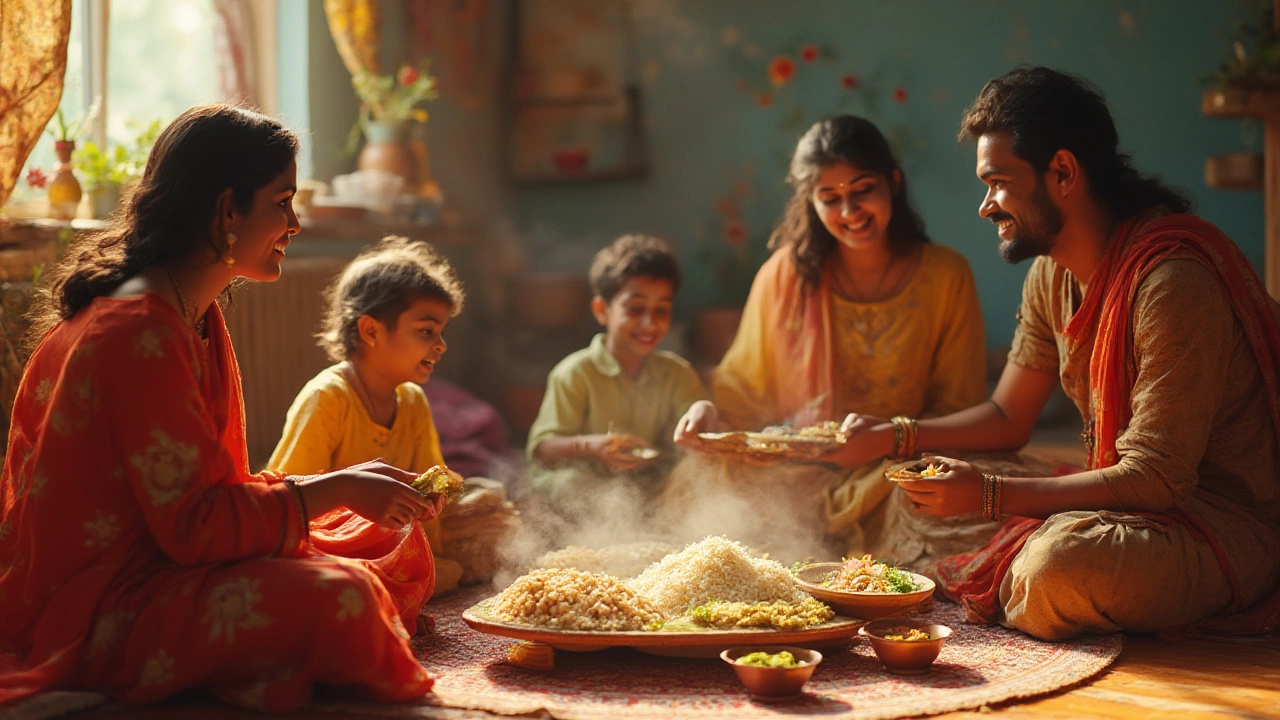SEARCH
Indian Staple Food: What You Eat Every Day in India
If you’re planning a trip to India, the first thing you’ll notice on any plate is the simple yet filling base: rice, wheat or millets. These foods aren’t just side dishes; they are the heart of every meal, from street stalls to fancy hotels. Knowing the basics helps you decide what to order, keep your stomach happy, and blend in with locals.
Common Staples Across Regions
In the north, wheat rules. You’ll find chapati, roti, paratha and naan on almost every table. They’re usually dunked in curry or used to scoop up dal. In the south, rice dominates. Expect fluffy steamed rice, flavored rice like lemon rice, or coconut rice on the side. The east loves rice too, but they serve it with fish or sweet mustard sauces. The west mixes both – you’ll see millet rotis in Gujarat and rice in coastal Maharashtra. Millets such as jowar, bajra and ragi are gaining popularity for their health boost and are common in rural areas.
Each staple pairs with a set of classic accompaniments. Dal (lentil soup), bhaji (vegetable stir‑fry), pickle, and yogurt are the usual sidekicks. When you order a thali – a platter with small bowls – you’ll get a balanced mix of these items, giving you a real taste of everyday Indian meals.
Tips for Eating Staples When You Travel
First, watch the oil. Street stalls often fry the rotis or toss the rice in generous oil. If you’re watching calories, ask for “less oil” – most vendors are happy to adjust. Second, stay safe with water. When you see rice or roti served with a gravy, make sure the gravy is hot and fresh. Avoid lingering sauces that have been sitting for a while.
Third, try regional specialties. In Kerala, don’t miss appam – a soft rice pancake paired with coconut stew. In Punjab, buttery naan with a dollop of ghee feels like heaven. In Gujarat, bajra rotla with garlic chutney is surprisingly satisfying. Sampling these variations gives you a deeper view of how the same staple can taste totally different.
If you have dietary restrictions, ask for “no ghee” or “no dairy” – most places understand and can serve a simple dal and rice combo. For vegans, look for vegetable bhaji and lentil dishes; they’re everywhere.
Finally, keep an eye on spice levels. Indian food can be fiery, but you can always ask for “mild” or “less chilli”. Most cooks will tone it down if you speak up.
By knowing the basics of Indian staple food, you’ll waste less time guessing what to order and more time enjoying the flavors. So next time you sit down for a meal, remember that the real story starts with that simple grain on your plate. Happy eating!

Most Eaten Food in India: What Is the Everyday Staple?
Curious what most Indians eat every day? Unpack India’s most eaten foods and how rice and roti rule millions of plates. Discover traditions and fun food facts!
Continue reading